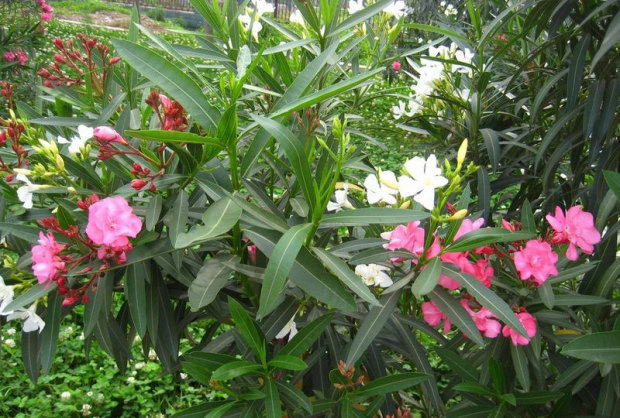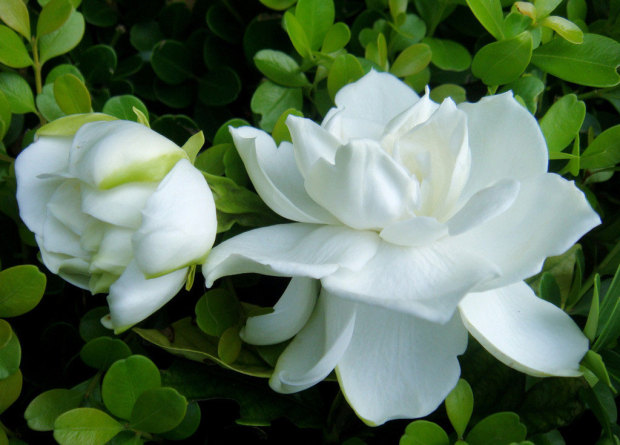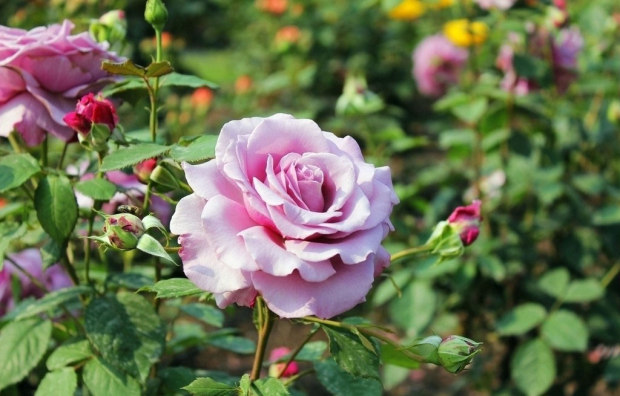Cultivation and culture methods of oleander
Oleander leaves like bamboo and flowers like peaches, hence the name oleander, some people say that leaves are like willows and flowers are like peaches, so they are also called willow peaches. Oleander is an evergreen shrub or small tree of Oleaceae, the plant can reach 3 meters, the old branches are gray, smooth, and the leaves are simple and dark green. Inflorescences terminal, Corolla funnelform, milky white or pink, slightly fragrant. Oleander plant posture Xiao sprinkle, colorful, and have the victory of peach bamboo, flowering since early summer, through autumn is only. It's a good flower to decorate the courtyard.
Originating from India and Iran. It is cool and sunny. It can be cultivated in the open field in the Yangtze River Basin of China. The soil requires fertile loam with strong water retention. The method of striping is the main method of reproduction. in the rainy season, the cut and epidermis of the branches near the surface are buried in the soil and take root after about two months, which can be separated from the mother plant. It can also be propagated by cutting. In May, the branches are cut off and soaked in a water glass with a temperature of 20 degrees Celsius. It takes more than a month to begin to take root. After it is taken out, it is inserted into the coarse sand and placed in a dark place to survive.

Cultivation is relatively simple, and it is a common flowering shrub in the courtyard in Jiangsu and Zhejiang. Can not stand the cold in all parts of North China, can only be potted, such as planting in the courtyard, at the end of autumn need to dig up the pot and put it indoors for the winter. The potted plants were moved outdoors in the middle and late April of early spring to change pots and apply base fertilizer. It can be watered properly in summer, watering thin, rotten and fertile water every 10 murals every 15 days to promote growth.
Spray and wash the branches and leaves with rinse water every evening to keep the air moist and fresh. After flowering for 3 years, the old branches have been weak, so a strong pruning should be carried out to promote the re-emergence of thick branches and bloom. When pruning, there are generally 3 main branches on each trunk and 3 branches each, so as to form a "trigeminal and nine-topped" crown in the future. In order to promote rapid and robust growth, after pruning, it can be planted on the ground, and given sufficient water and fertilizer, transplant into the autumn and install the pot, move into the indoor overwintering. Keep room temperature no less than 0 degrees in winter: if the temperature is too high during hibernation, nutrients will be consumed, affecting the growth and flowering of the following year.
Oleander stems and leaves are poisonous, people and animals can not be eaten by mistake, in medicine can be used to extract cardiotonic agents.
Monthly calendar of cultivation and maintenance of oleander
January
To do a good job of cold prevention, branches should be tied up and supported to prevent snow from breaking branches, and snow should be removed in time after snow.
February
Transplanting should be carried out in spring, base fertilizer should be applied in the planting hole, and water should be watered thoroughly for the first time after planting. Soil balls are needed for transplanting in other seasons, and leaves should be cut properly in summer to reduce foliar evaporation. In frozen places, short pruning should be carried out before germination, and sprouts should be wiped to facilitate the restoration of tree potential. Shaping and pruning, generally, each trunk retains 3 main branches, each leaving 3 branches, so that the crown of "three branches and nine tops" will be formed in the future.
March
Cutting propagation, cut 15-20 cm long branches, every 20 into a bundle, immersed in 20 ℃ of water, into the water 1 to 3, frequently change water, 7-10 days later, some branches white, the top began to stick, take out and insert in the seedbed. It can also be soaked in water for 30-40 days. After rooting, it can be taken out and inserted in the sand bed. It can take root in about 1 month. Topdressing liquid fertilizer once is beneficial to growth and flowering.
April
The plant begins to blossom until October, paying attention to weeding, pest control and weeding.
May
Cut off the blooming flowers in time to avoid wasting nutrients.
June
Striping propagation is carried out in the rainy season, select more than one-year-old plants with more branches as the female parent, select annual branches with a diameter of more than 0.8 cm, remove leaves at 33 cm from the top, twist the skin, fold into a "8" shape, press into the soil, a depth of about 10 cm, cover soil compaction, to prevent branches from popping out after watering, watering once after pressing, and then dry watering, which can take root and separate after about 60 days.
July
Prevent stagnant water after rain and remove weeds and residual flowers in time. Oleander has strong tillering ability, and many tillers will sprout from the base during the growth period. in order to reduce nutrient consumption and maintain beautiful posture, oleander should be removed or cut in time.
August
Same as last month's management.
September
Same as last month's management.
October
Same as last month's management.
November
The application of phosphorus and potassium fertilizer after anthesis is beneficial to healthy growth.
December
To do a good job of cultivating soil and preventing cold, seedlings should wrap grass to prevent freezing, and trim tillering branches and overdense branches once. To control moisture, it is appropriate to be dry.
Cultivation techniques of oleander
Oleander scientific name: Neriumindicum alias: willow peach genus: oleander, oleander is native to India and Iran. It has been introduced in our country for a long time, and it has been cultivated all over the country. Evergreen shrubs or small trees. Gibbous, narrow, 3 whorled, 4 and 2 opposite, leaves shiny, lateral veins pinnately parallel and dense, margin revolute. Cymes terminal, Corolla red or white, flowers single or double, fragrant. ?? The fruit is hornlike. The florescence is from June to September and the fruit is from December to January of the following year. The common varieties in cultivation are: White oleander var.leucanthum, the flowers are pure white. Double oleander var.plenum, red, double. Common ornamental plants of the same genus are European oleander N.oleander, with flowers clustered on top of branches and pink, native to the Mediterranean region. Oleander green leaves as green as willow bamboo, red flowers burning like peaches, since the Summer Solstice autumn, open, suitable for parks, green spaces, roadsides, lawn edges, traffic green island group planting, can put on the summer of few flowers "peach red willow green" spring clothes, reflect the colorful landscape; it is also appropriate to be used as anti-pollution tree species in industrial and mining areas; potted ornamental is also very appropriate, colorful flowers, long florescence; can also be cut as cut flower materials. The whole plant is highly toxic and it is dangerous for people and animals to eat by mistake, so planting near wells and drinking pools should be avoided. The cultivation techniques of oleander like sunshine and can also adapt to a more shady environment. Good warm and humid climate, not cold-resistant, afraid of waterlogging. The requirements of the soil are not strict, and the neutral soil with good drainage and fertile soil is the most suitable, and the slightly acidic and light alkaline soil can also adapt. The tree is strong, resistant and absorptive to toxic gases such as sulfur dioxide and chlorine. The base and branches of the plant have strong germinating ability and are resistant to pruning. Propagation to cut beer spirit main, can also split, pressing or sowing seedlings. Cuttings can be cut in spring and summer, such as soaking the base of cuttings in clear water for 7-10 days before cutting, keeping them fresh, rooting ahead of time, and the survival rate is also high; it can also be cut in full water, the water temperature is 20 ℃, the water is often changed, and the seedling bed is maintained after rooting. It is appropriate to transplant in spring, medium and small seedlings need to take more soil, and large seedlings need to bring soil balls. Summer transplanting also requires thinning branches and cutting leaves to reduce foliar water transpiration. Potted plants can also be planted in cold areas, and the lowest overwintering temperature should be more than 5 ℃.
- Prev

Cultivation and Culture methods of Gardenia jasminoides
Gardenia is an evergreen shrub with emerald green leaves, leathery gloss, Corolla milky white six-valved, solitary branchlet tip, fragrant; after withering, it becomes yellowish brown, and the afterscent is still overflowing; the florescence is April or June. Gardenia is one of the most popular garden and potted ornamental flowers.
- Next

Cultivation and Culture of Rose and Rose
Rose, also known as Catharanthus roseus, also known as the four Seasons Rose, because it blossoms throughout the year, and Rose is a close relative. The cultivation of rose in China has a long history. In ancient times, there is only a flower without ten days of red, this flower has no day without spring breeze to praise the flowering characteristics of the four seasons. But it refers to the Chinese rose, that is, monthly red or iron red.
Related
- Fuxing push coffee new agricultural production and marketing class: lack of small-scale processing plants
- Jujube rice field leisure farm deep ploughing Yilan for five years to create a space for organic food and play
- Nongyu Farm-A trial of organic papaya for brave women with advanced technology
- Four points for attention in the prevention and control of diseases and insect pests of edible fungi
- How to add nutrient solution to Edible Fungi
- Is there any good way to control edible fungus mites?
- Open Inoculation Technology of Edible Fungi
- Is there any clever way to use fertilizer for edible fungus in winter?
- What agents are used to kill the pathogens of edible fungi in the mushroom shed?
- Rapid drying of Edible Fungi

